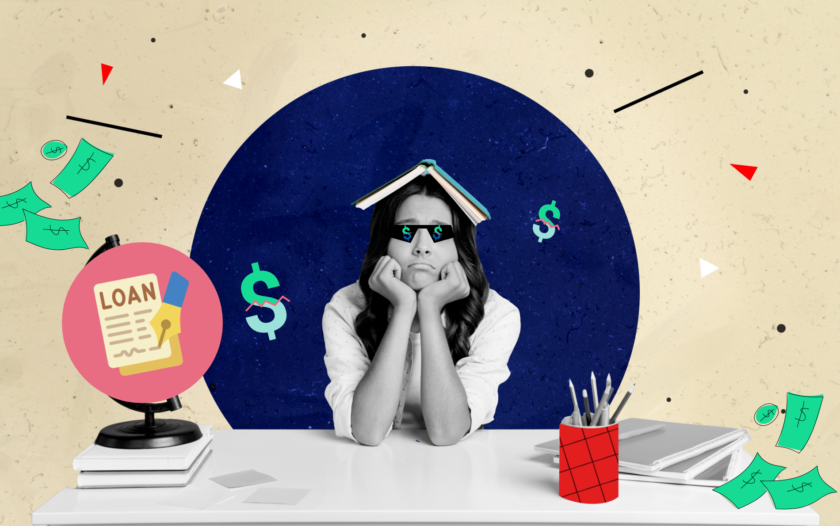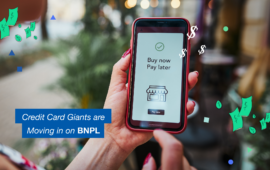What is a Hardship Loan and When Should You Use One?
About Trevor
Trevor Mahoney is a financial services writer and content creator based out of Los Angeles, California. He holds a Bachelors of Science in Finance from Santa Clara University. In his free time, he enjoys hiking and lounging on the beach.
Read full bio
At a Glance
Sometimes, financial hardships are impossible to avoid. In a tight pinch, financial assistance can make or break your personal situation. This is where hardship loans come in. As a loan type geared towards special financial situations, they can potentially provide you with the monetary support you need to get back on your feet.
In this article, you’ll learn:
What are hardship loans?
Hardship loans are a special type of personal loan that are specifically meant for unexpected financial challenges. Hardship loans usually have more favorable loan terms than other types of loans and can be useful in situations such as the aftermath of the Covid-19 pandemic, medical bills, unavoidable housing repairs, unemployment, and more.
Hardship personal loan options
A hardship loan can be difficult to qualify for if you are going through financial difficulties, but there are a number of different types of hardship loans available:
1. Personal loans for bad credit
One of the largest factors in whether or not a lender will approve your loan application is your history with credit. A credit score leaving a lot to be desired can quickly result in the denial of a loan application. However, personal loans for bad credit exist that offer more favorable terms for a borrower. Keep in mind, though, that in return for these more favorable terms, you will likely be charged a higher interest rate. If you already have a poor history with credit, taking on a large amount of debt with a high interest rate likely isn’t the best strategy.
Check out lenders and solutions that will meet your needs.
Use the filters below to refine your search

Sorry, we didn’t find any options that meet your requirements. Please try modifying your preferences.
Congratulations! You’re close to seeing your offers!
Please take a second to review the details you shared earlier
Sorry, we didn’t find any options that meet your requirements. Please try modifying your preferences.
2. Secured personal loans
As opposed to personal loans for bad credit which have higher interest rates, secured personal loans utilize collateral. Essentially, in return for a lump sum of money and more favorable APR, you will be required to offer some type of asset in return as collateral. If you default on your loan, the lender may be within their right to secure this asset for their own.
Related: Secured vs Unsecured Personal Loans
3. Joint or co-signed personal loans
Assuming you are unable to qualify for a hardship loan on your own, taking out a loan with a co-signer who has a strong credit history can help you get approved for the loan. Additionally, if your co-signer has a strong enough income background, you can receive more favorable loan terms as well.
Related: Personal Loans with a Cosigner
4. Credit Union personal loans
Along with banks and third-party lenders, credit unions are another common source for personal loans. The loan terms offered by credit unions are typically far more favorable than those offered by other financial institutions, but you might have to become a member of the credit union to take out the money.
Learn More: Credit Union Personal Loans
How do hardship loans work?
A hardship loan works similarly to a variety of common loan types, providing a borrower with a lump sum of money up front that they need to repay over time. Designed to be used for emergency expenses such as medical bills, rent payments, past-due bills, and more, a hardship loan typically is a higher-value loan.
For example, say you are injured while on the job but you don’t have enough money on-hand to cover the hospital bill that you are given. A hardship loan can provide you with the funds you need to pay off the bill, while allowing you to slowly pay the amount off over time.
How to apply for a hardship loan?
If the idea of a financial hardship loan is appealing to you, it’s worth learning about the process of applying for loans for financial hardship:
1. Take a credit check
First things first, you will need to check your credit score to better understand which lenders terms you will qualify for. By learning more about your credit score and history, you can better determine which type of hardship loan, such as a bad credit personal loan or secured loan, is right for you.
2. Get pre-qualified with lenders
Many lenders offer pre-qualification services that allows you to submit a portion of financial and personal information to see if you prequalify for the loan. A pre-qualification is not the same as a preapproval, but so long as none of the information you provided to the lender changes, there is a higher likelihood that you will be approved.
3. Compare multiple loan offers
When considering different hardship loans, never settle for the first loan that falls into your lap. Look at the terms of different offerings and compare factors such as the total loan amount, interest rate, APR, monthly repayment, and more.
Compare: Best Personal Loans
4. Submit a loan application with your preferred lender
After finding a lender who offers the best terms for what you need, make a decision and submit a formal application. Assuming you followed the above steps and prequalified for the loan, if it was an option, you can rest easier knowing that there is a better chance you will be approved.
5. Sign your closing documents
Finally, once you are approved for a loan application, you will need to sign all of your closing documents. This contract that you sign will go over all the important terms such as the length of the loan, amount being loaned, and more. Review all of these terms completely to ensure there are no hidden fees or anything else that wasn’t disclosed right away.
Alternatives to hardship personal loans
In the event that financial hardship loans aren’t right for you, there are loan alternatives you can consider:
1. A 401(K) hardship withdrawals
Under normal circumstances, removing funds from your 401(k) may not be allowed or a penalty fee will be applied. However, in the event of financial hardship there are occasional exceptions that may be allowed, but the funds you take out will still be taxable. Keep in mind, however, that all money taken out of your 401(k) is money out of your retirement pool.
Related: Should You Use a 401k Loan to Pay Off Debt?
2. Home equity loan and HELOC
An alternative to hardship personal loans is a home equity loan or a home equity line of credit. This type of debt involves taking out a lump sum of money or gaining access up to a certain amount of money, but the equity in your home serves as collateral. It’s important to be cautious with this type of loan, as a failure to repay what you owe can result in the loss of the equity put up as collateral.
Learn more: Home Equity Loan and HELOC
3. Peer-to-peer lending
Peer-to-peer lending can be an option to consider if you aren’t looking for an extremely large loan amount and need quick access to cash. In peer-to-peer lending, the middleman is removed, and lenders are connected directly to borrowers, typically through a website. Under this type of lending, interest rates are typically far higher due to the added risk.
Learn more: Peer-to-Peer Lending
4. Paycheck advance applications
Some employers may allow you to take an advance on your next paycheck if you present your financial hardship situation as reasoning. Not all employers allow this but take the time to speak with your employer prior to taking out a potentially unnecessary loan.
5. Borrowing from friends and family
Borrowing money from friends and family for emergency expenses is a double-edged sword. While there likely won’t be interest and your close friends and family will be flexible on when and how you repay them, the relationship with that person is at risk if you cannot pay them back. Be sure you trust the person loaning you money and are capable of paying them back.
Can I get a hardship loan if I am unemployed?
Yes, hardship loans can still be acquired if you are unemployed, so long as you are able to show that you can repay the loan. You may need to bring on a co-signer to the loan in the event your financial standing is not enough to be approved.
Pros and cons of hardship loans
There are a number of key pros and cons associated with hardship loans that all borrowers should consider before borrowing. The primary benefits to using a hardship loan include:
1. Access to a large sum of money up front.
2. Longer repayment periods mean a longer turnaround time for the loan.
3. The ability to meet financial obligations you wouldn’t normally be able to out of pocket.
However, for each of the above pros, there are a few main cons to think about and consider before signing the contract to take out the funds. The most notable of these cons include:
1. Hardship loans can be expensive depending on your credit history.
2. Solving your financial problems by taking on debt is not a good practice.
3. Hardship loans may not provide enough funds for your needs.
FAQs
There are several different types of financial hardships that can emerge over the years including, but not limited to:
- Medical expenses
- Change in your employment
- Natural disasters
- Unexpected loss of income
- Death
- Divorce
Beyond the above, a financial hardship can technically be any unexpected event or situation that places an abnormal strain on your finances.
Hardship loans can affect your credit both positively and negatively. If you meet all your payments on time and in full, your credit history will build overtime and your score will slowly increase. However, if you start missing loan payments or allow the loan to go into default, your credit score and history will quickly deteriorate.
Given that most hardship finance loans are personal loans, the average amount you will be able to borrow is anything between $1,000-$100,000.
When you are in a financial pinch, hardship loans for bad credit, hardship secured loans, or a standard personal hardship loan can help. Just be sure to compare different loan offerings to be sure that you are receiving the most favorable interest rate and loan terms.
Obtaining a hardship loan with bad credit can be hard, as lenders typically consider your credit history and score when assessing your eligibility for a loan. However, the availability of hardship loans and the specific requirements may vary depending on the lender or program you approach.
Hardship loans typically need to be repaid. However, the specific terms and conditions of the loan depend on the lender and the agreement you have entered into. It’s important to carefully review the terms and conditions before accepting any loan. The terms of the loan, including the repayment schedule, interest rate, and any other applicable fees, will be outlined in the loan agreement. If you have received a hardship loan, it is crucial to honor your repayment obligations as agreed. Failing to repay the loan as per the agreed terms may result in additional fees, penalties, damage to your credit score, or legal consequences, depending on the specific circumstances and the laws in your jurisdiction.
The choice between a hardship withdrawal and a 401(k) loan depends on your individual circumstances, financial needs, and long-term financial goals. Typically a 401(k) loan may be a better option but you have to be employed. However, if you do opt for the 401 (k) loan try to keep up with your retirement savings so you don’t make too much of an impact on these funds.
Proof of hardship typically refers to documentation or evidence provided to show that individual or entity is experiencing significant financial or personal difficulties. It is often required in various legal, financial, or administrative processes where the individual is seeking assistance, support, or special consideration due to their circumstances. The specific requirements and purpose of proof of hardship may vary depending on the context in which it is being used. Some examples include:
- Loan modifications or forbearance
- Immigration waivers
- Financial assistance programs









